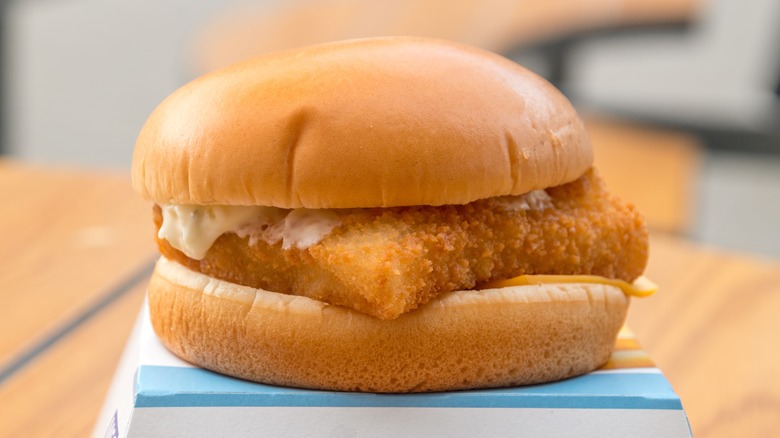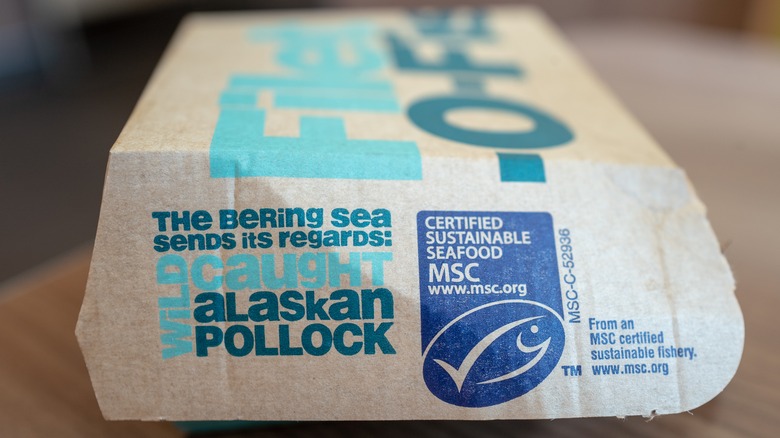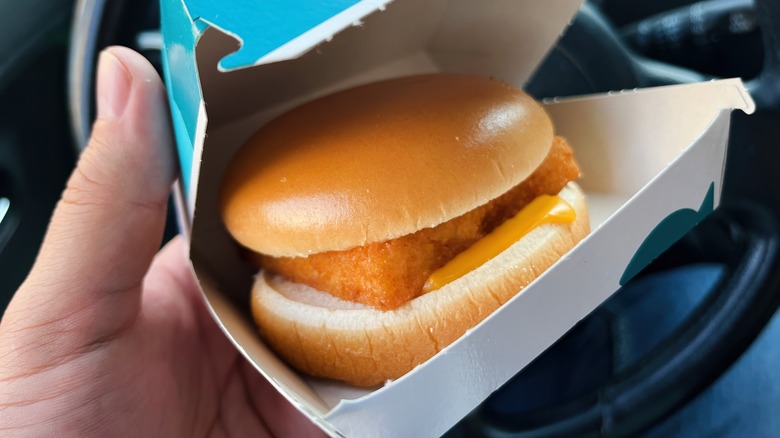McDonald's Filet-O-Fish Is Delicious, But Is It The Real Deal?
There's nothing quite like the soft, crispy, gooey delight of a McDonald's Filet-O-Fish sandwich. The iconic combination of American cheese, tangy tartar sauce, soft golden bun, and strangely square, perfectly flaky fish filet patty has accrued a passionate fan club since its nationwide debut in 1965.
The Filet-O-Fish has even earned the coveted title of the favorite sandwich of McDonald's CEO, and the company serves a whopping 300 million of the sandwiches each year. Even those who eschew all other forms of fast food find they can't quite let the Filet-O-Fish go.
Given the surprising answers you can get when you start investigating the ingredients in McDonald's food, some might assume it would be better to remain blissfully ignorant about what kind of "fish" goes into a Filet-O-Fish sandwich. But as it turns out, the provenance of that almost-too-perfect square patty is surprisingly unfishy — the Filet-O-Fish sandwich is made with sustainably sourced Alaska Pollock at U.S. locations.
What kind of fish goes into a Filet-O-Fish?
The Filet-O-Fish sandwich is always made with wild-caught Alaska Pollock at U.S. locations. Globally, 99% of the fish used in Filet-O-Fish sandwiches is wild-caught and sustainably sourced.
Sure, wild-caught Alaska Pollock sounds great, but names can be deceiving. Luckily for Filet-O-Fish fanatics, this fish is legit. Alaska Pollock is one of the top seafood species consumed by Americans. Additionally, with its relatively high protein content and a healthy dose of omega-3 fatty acids, Alaska Pollock packs a heart-healthy nutritional punch (though some of those benefits are surely canceled out by the fact that the Filet-O-Fish is breaded and deep-fried).
It's worth noting that Alaska pollock is one of the cheapest fish options available, and some seafood aficionados criticize its mild flavor as decidedly boring. But really, any McDonald's customer can appreciate a good bargain, and no one is going to the Golden Arches expecting a gourmet seafood experience. By using reasonably healthy, sustainable, and real fish, McDonald's has already exceeded customer expectations.
The benefits of McDonald's using sustainably sourced fish in the Filet-O-Fish
If using an ingredient that's surrprisingly healthy (at least by fast food standards) wasn't enough, McDonald's continues to go above and beyond by assuring customers that the Alaska Pollock used in its Filet-O-Fish sandwiches is always 100% sustainably sourced at U.S. locations. This might seem too good to be true, but it checks out — Alaska Pollock is certified sustainable by the Marine Stewardship Council.
Sustainably sourced seafood is vital for protecting our environment and health. Most importantly, it helps ensure a bountiful fish supply for years to come, so that future generations will also get to experience the iconic beauty of a McDonald's Filet-O-Fish sandwich.
At the end of the day, the Filet-O-Fish may not be a gourmet culinary experience, but it provides a certain nostalgic, eerily consistent comfort that can only be provided by the Golden Arches — and, somewhat surprisingly, it's a relatively healthy and sustainable fast food option. So even if your local McDonald's ice cream machine is broken, the Filet-O-Fish will always be there.


